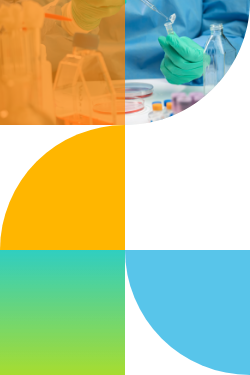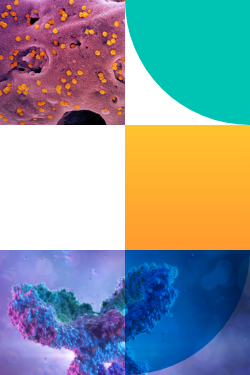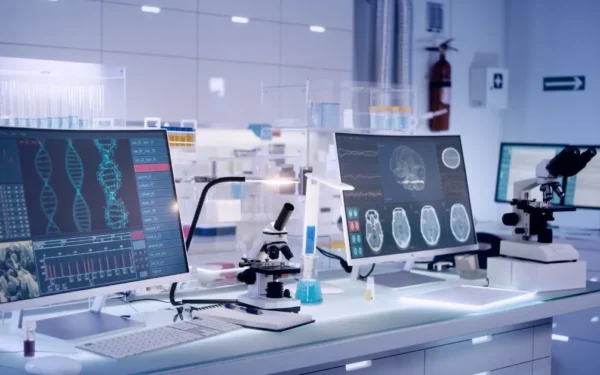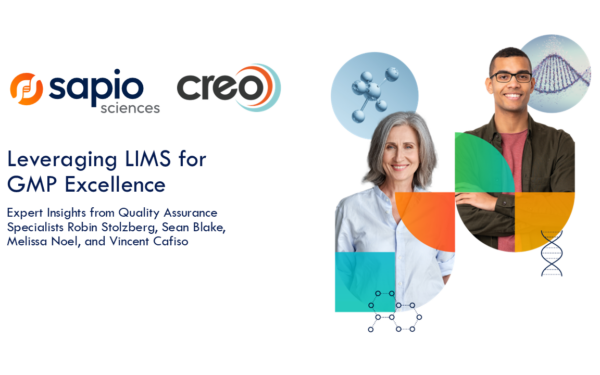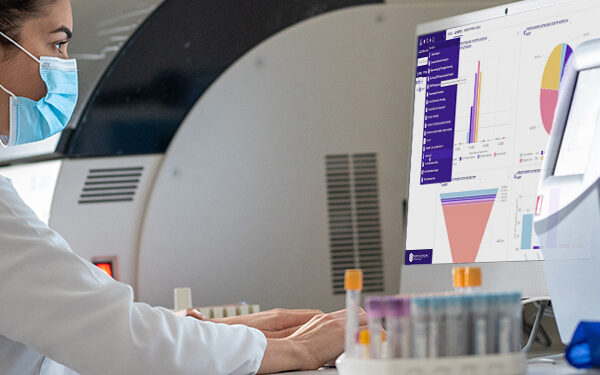Science never slows down, and the right lab informatics solution is integral to accelerating productivity, enhancing efficiency, and gaining the deep insight needed to develop drugs and provide diagnostics faster. Despite the proliferation of technologies targeted at the life sciences space, few lab solutions available today address the real needs of the scientist as the hero of scientific progress. Unfortunately, that leaves many scientists struggling with solutions that are difficult to use, navigate, and configure without intervention from a team of coders.
So, how can laboratory leadership identify a solution that makes life in the lab easier instead of more difficult? The answer is to listen to the perspectives of real scientists with real bench experience, allowing their insight to shape the solution search.
We recently spoke with Mike Tolino, Sales Solution Engineer at Sapio, to learn more about his firsthand experience with lab solutions. Mike has over 10 years of experience as a laboratory scientist, with roles in clinical labs for the University of Pittsburgh Medical Center and LabCorp. Mike’s specialties span NGS, molecular biology, and cell cultures.
Can you describe how lab informatics solutions impacted your daily work?
The labs I’ve worked in used various solutions to manage lab workflows and data. For example, we used electronic lab notebooks (ELNs) to record experiment data in a centralized location, lab information management systems (LIMS) to manage workflows and samples, and a variety of scientific data management systems (SDMS) to store information. Each lab was at a different place in its ‘digital maturity’ and therefore, in adopting these solutions. Those farther ahead on the adoption curve were naturally more efficient and effective in their daily work.
Typically, these were all separate solutions, and I used all of these on a nearly day-to-day basis to manage samples, generate reports, analyze results, and more. While these solutions provided utility on their own, they were not integrated.
Like many scientists, I lost time in the daily rituals: logging in and logging out, importing and exporting my data, searching for details I needed in another system, and leaning on another solution to collaborate with my colleagues. As a result, a portion of the ‘digital lift’ was always left on the cutting room floor, lost in the inefficient space between disparate solutions.
How did you bring together data from disparate lab solutions and systems?
While some of the solutions had APIs or supported importing and exporting data across them, the process was often largely manual and required a lot of data clean-up. The volume of data generated in the lab is massive, particularly for NGS, with different instruments, samples, and materials all at play. We spent a lot of time sorting through data, entering data, bringing data together, and the list goes on.
The inefficient de facto standard for laboratory data utilization is a bit of a dichotomy. The industry continues to move towards more data-driven procedures, like high throughput screening. Much of this data is handled at the edge by discrete data tools that are instrument-specific. But the real power lies in bringing all this data to the scientist, the real change maker and innovator in the life sciences ecosystem. Most laboratories have still not solved the data problem, and it takes more than your standard run-of-the-mill SDMS. It takes a solution that understands the context in which a scientist needs to search, access, utilize, and analyze data. In other words, data management has to be integrated with the rest of the laboratory workflow.
What are some ways that you felt the lab solutions you’ve used in the past were lacking?
I already touched on siloed, disparate solutions as one of the primary shortcomings in my mind. But there were some others.
Usability was often weak, leading to poor adoption among scientists or the overall view that the technology was not a powerful enabler but a necessary evil. In some laboratories, scientists develop processes to sidestep the solution and meet their requirements. This is a real problem collectively, as it results in a lack of standardization that hinders the scalability and utilization of data.
In addition to usability, a lack of configurability stands out. Many of the systems I used were relatively rigid, making it challenging to support specific workflows or samples. If we tried to adapt the systems to meet specific requirements, it would either involve a lot of intervention from IT team members or break something and bring us back to square one. Lack of configurability becomes incredibly frustrating as a lab scales and workflows evolve, as they inevitably do.
If I were on the hunt for a LIMS or ELN today, I’d prioritize both things.
What advice would you give to lab professionals searching for a lab informatics solution?
Make sure to ask the right questions. You’ll often see labs adopt an informatics solution—whether it’s a LIMS, ELN, or SDMS—primarily because of name recognition and popularity within the scientific community. But the most popular is not always the best, especially when your lab is novel in its science, workflows, and approaches. When labs choose a solution just because their neighbor did, they risk getting hamstrung by a solution that is not ideal for their requirements.
Laboratory leaders can avoid this pitfall by asking the right questions when seeking a solution. How do I access and analyze data within the platform? Can I integrate the solution with my lab instruments, even if my instruments change? How can I adapt workflows, and to what degree will I need to rely on coders? How do you satisfy NGS, chemistry, or clinical requirements out of the box? Can I speak to an existing client? Your solution provider should answer these questions confidently and without hesitation.
How does your experience as a scientist inform your role as a Sales Solution Engineer at Sapio today?
My experience has given me a solid understanding of what scientists want and need from a solution. It’s easy for me to put myself in their shoes because I was in them. This is useful in conversations with clients and prospective clients because I can envision exactly what they’re looking for and then explain how our solution addresses it in a way that resonates with them. I also serve as a mediator between our clients and prospective clients, and our product development team, surfacing considerations based on my discussions with lab professionals and my own experience.
It’s easy to stand by the Sapio Platform. It’s the first solution I’ve encountered that reflects the scientist’s needs and offers pragmatic answers to some of the most pervasive challenges scientists have in the lab. To tell scientists about Sapio is to tell the truth. It’s refreshing to work for a company that takes its commitment to product excellence and partnership seriously.
How do you see the role of the lab informatics solution evolving?
Right now, everyone is talking about artificial intelligence and machine learning. The scientific community is no exception, and the potential applications of these technologies are widespread—both for clinical and discovery labs. AI can help identify potential drug candidates, detect diseases earlier and with greater granularity, develop personalized therapeutics, automate high-throughput screening, predict results, strengthen operational efficiency, and much more. Tapping into the potential of AI requires a foundational commitment to data unification and standardization. Solving the data challenge is a prerequisite to embracing AI wholeheartedly. At Sapio, we’re solving the data problem at the heart of science with Jarvis.
Mike’s insights, like those of so many scientists we interact with, reflect the promise and necessity of technology in the lab and the gaps around usability, configurability, and data unification. At Sapio, we are eliminating these gaps with a unified lab informatics platform that is genuinely science-aware™. To learn what that means, request a demo.
